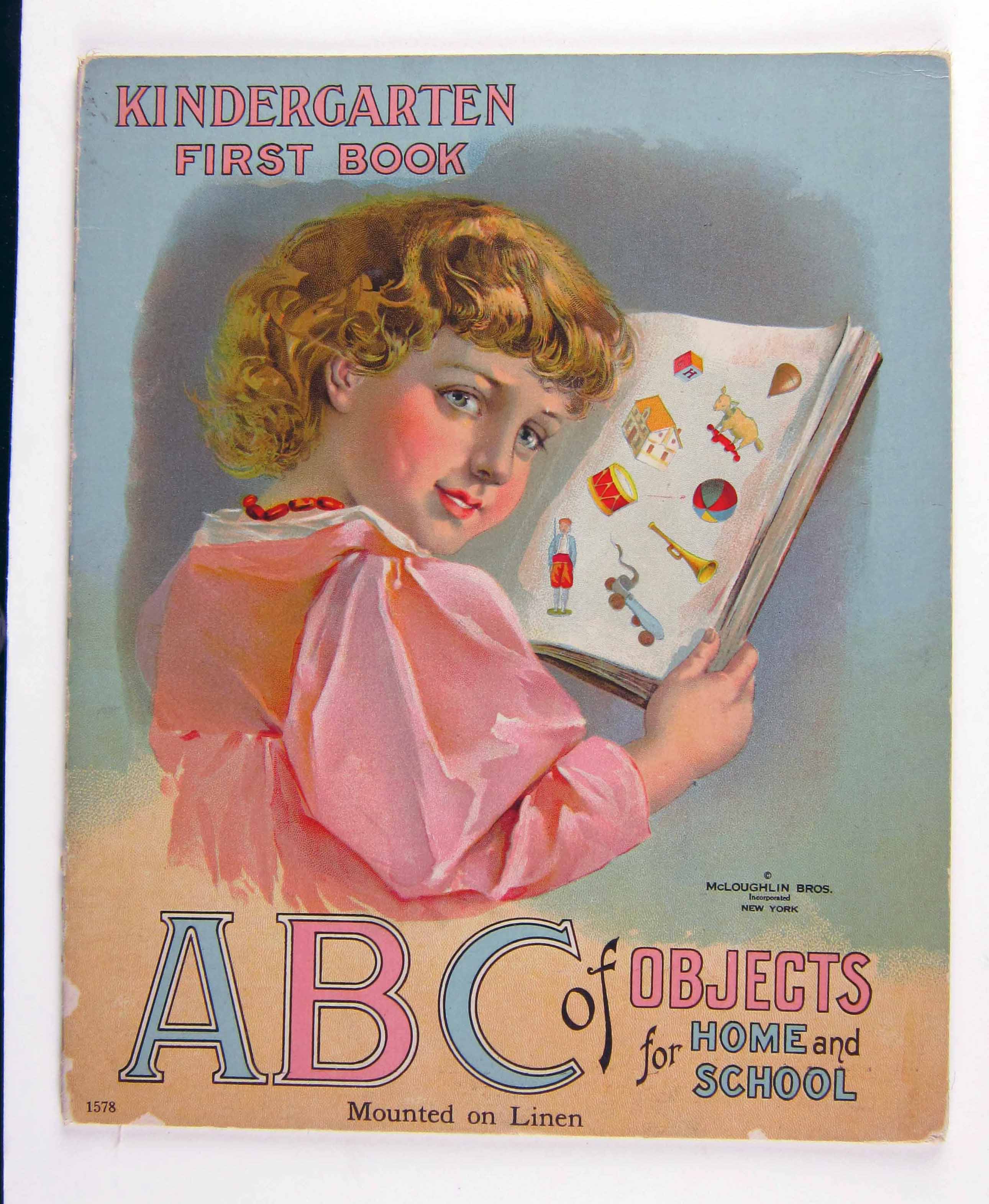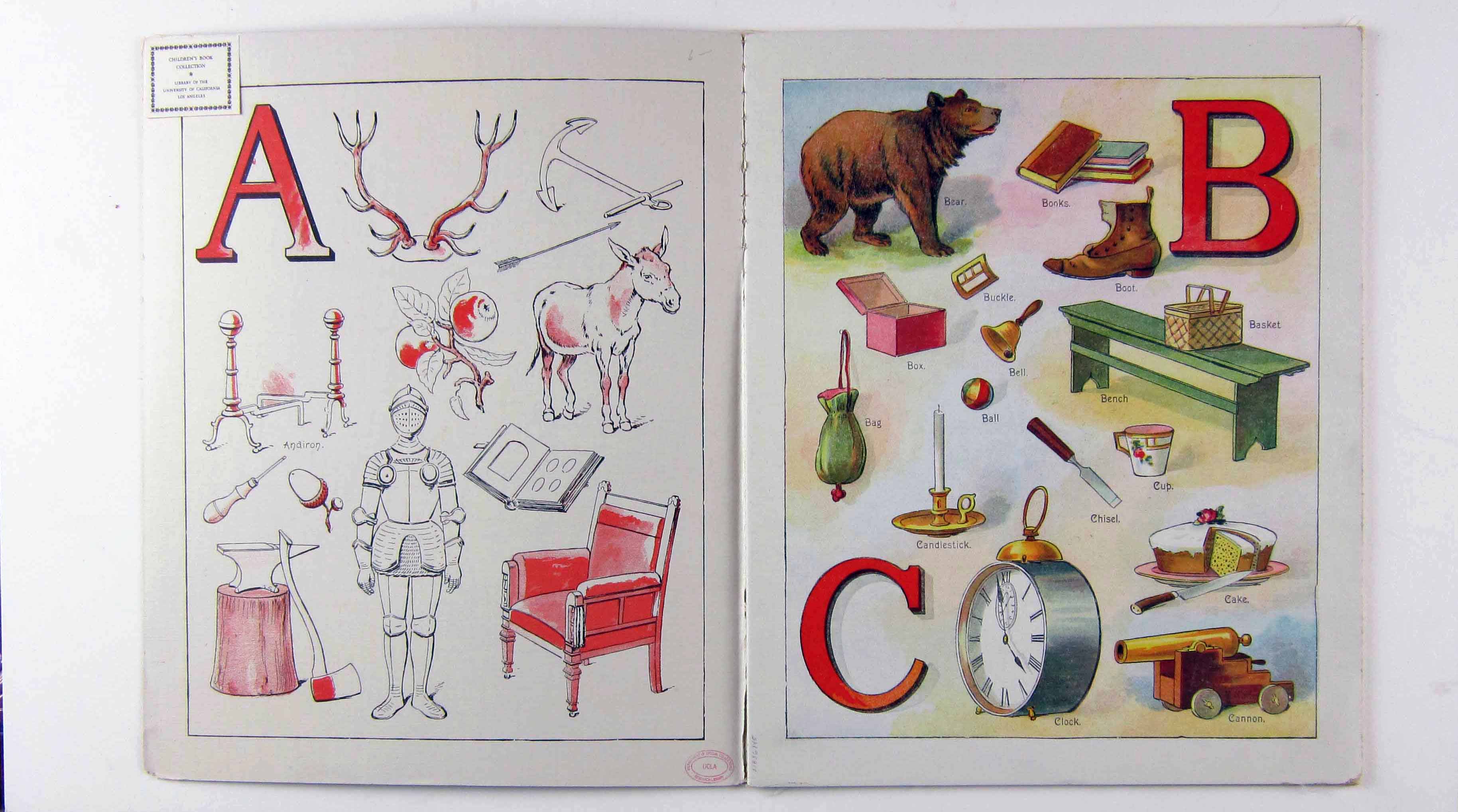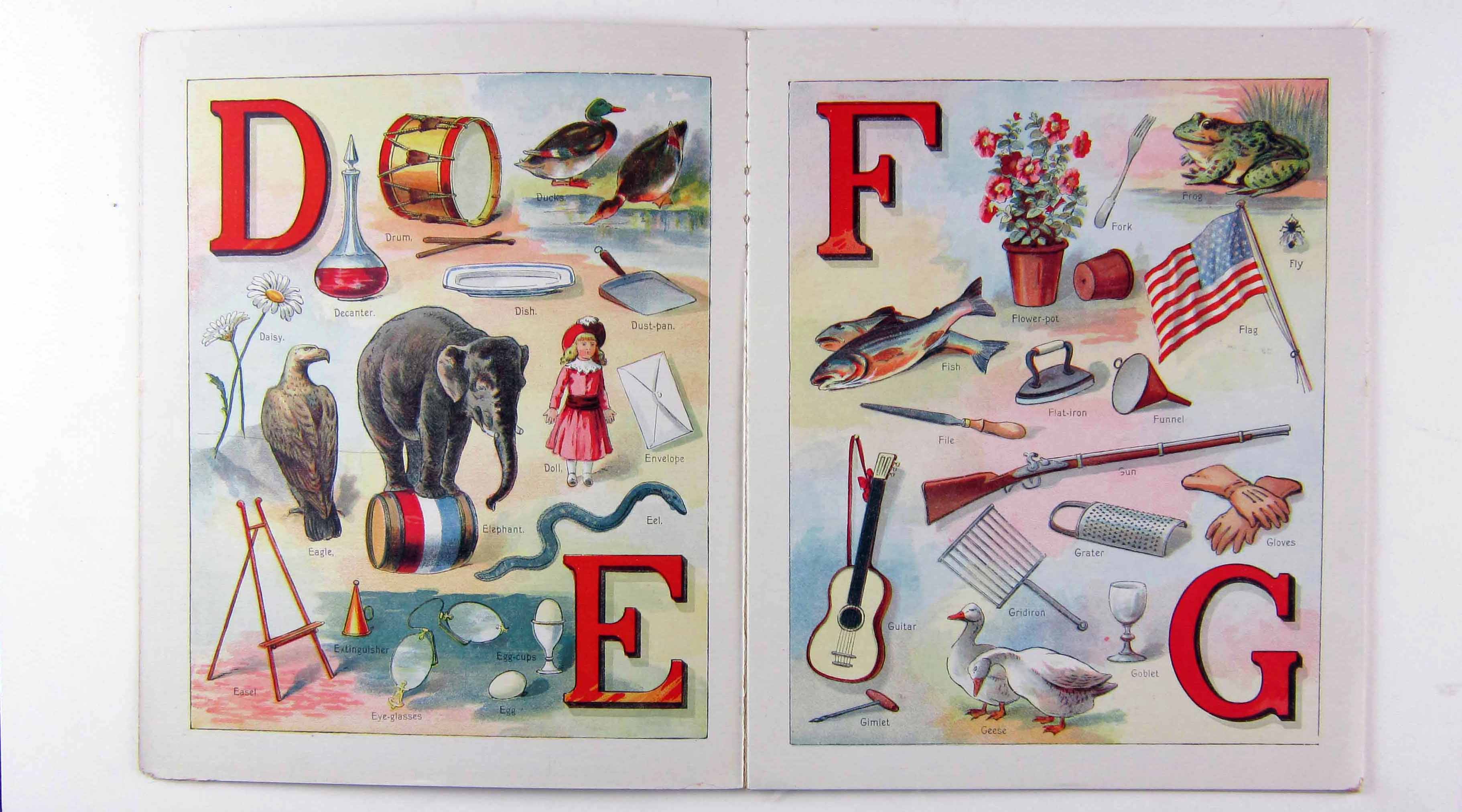

Alphabet books offer a vivid insight into the history of literacy and culture, as well as concepts of childhood. The Children's Book Collection at UCLA contains a rich array of these materials, some well-worn and much-used, some still bright and fresh. Each is a gem of print production and graphical imagery from another time and place. Though the history of alphabet books continues to the present, this exhibit focuses on the works in our collections published between 1700 and 1900, including horn books, primers, works of didacticism and seriousness, whimsy and play.
2. A Jumble ABC
3. A Little Pretty Pocket-Book
4. A New Lottery Book of Birds And Beasts
5. A Pretty Play-Thing for Children of All Denominations
8. ABC of Objects for Home And School
10. ABC with Pictures & Verses
12. Alphabet Et Instruction Pour Les Enfans
16. Dolly's ABC Book
17. Flora's ABC
18. Home ABC
22. Hornbook C. 1700
23. Large Letters for the Little Ones
24. Little ABC Book
25. Little People: An Alphabet
26. Martin's Nursery Battledoor
27. Mother Goose ABC
28. My Darling's ABC
29. Orbis Sensualium Pictus Quadrilinguis
30. People of All Nations: A Useful Toy for Girl Or Boy
31. Picture Alphabet
32. Pretty ABC
33. Railway ABC
34. Rusher's Reading Made Most Easy
38. The Alphabet of Old Friends
40. The Amusing Alphabet for Young Children Beginning To Read
42. The Child's Christian Education
45. The Easter Gift
47. The Favorite Alphabet for the Nursery
49. The Franklin Alphabet And Primer
51. The Golden ABC
55. The Moral And Entertaining Alphabet
57. The Old Testament Alphabet
59. The Picture Alphabet for Little Children
62. The Sunday ABC
63. The Union ABC
64. The Young Child's ABC, Or, First Book
65. Tom Thumb's Alphabet: Picture Baby-Books
67. Warne's Alphabet And Word Book: with Coloured Pictures
68. Wood's Royal Nursery Alphabet
Title ABC of Objects for Home And School



Brief description Printed on linen. Chromolithograph coloring. First and last leaves pasted down to wrapper. 16 pages. Full color (although first and last leaves are black, white, and red). 1578 at foot of cover. Publisher's name and Kindergarten First Book also on the cover.
Full description The ABC of Objects for Home and School is a relatively large book. The cover depicts a small blond child in a pink frock looking over her shoulder while holding an open book that is illustrated with colorful toys. The colors on the cover and throughout the book are predominantly soft and pastel.
Aside from the title, there are multiple small text blocks on the cover. "Mounted on Linen" and "1578" are on the bottom left of the cover, and there is also publishing information printed on the cover. There is also text saying "Kindergarten First Book." There is some wear on the spine where the color has chipped off and the corners of the book which have also lost some of the printed color and have softened over time.
There are sixteen pages, each with one to three letters with vignettes of objects starting with those letters. The objects have a small label. All of the pages are full color and contain objects that might be found in home, school, or in stories. The pages are sewn, and there is wear near the stitches.
There is no author or illustrator information.
Literacy The ABC of Objects for Home and School can tell us several things about the conditions of literacy during the period in which it was published.
Firstly, it shows that the literacy in this time was learned partially through social interaction. The child on the cover invites you to join her and the size of the book invites sharing. Since a small child might not always readily know the words and images included, an adult might need to help the child identify objects and teach them letters and words.
Literacy, in this book, is best learned by matching words and sounds to visual cues. It is not just educational literacy that is taught in this book, but there is a bit of social literacy as well. For example, the book shows a vagrant, the only illustration in the book that is not brightly colored and the only person in the book that looks sad. Whereas when people of higher classes are illustrated, they are illustrated beautifully and brightly.
A sense of visual literacy is demonstrated by the fact that the illustrations are more realistic than cartoonish, and not only represent things to children that they might see around their homes or schools, but also orient them and gives them an idea of things that they should see and be able to recognize as they grow older.
Childhood This book is labeled as a "Kindergarten First Book," which suggests that the child using this book would be very young. The size of the book is perfect for sharing, indicating that learning was a social activity. This is in keeping with the Victorian belief in the importance of nurturing children and giving the child a great deal of attention, particularly from the mother.
The letters on the labels of images are small and difficult for a child just learning letters to read. Implied here is that learning should be a social process between an adult and child. There is a sense of interaction, of strengthening social bonds, because while a child might be able to identify some of the myriad objects in this book, they might not be able to name them all. And while there are images of practical things, there are also some romantic or fantastical things as well, including unicorns and knights.
With beautiful colored illustrations, this book depicts childhood as a time for interaction, exploring, and imagination, fitting with Victorian ideals. Given the illustrations and the quality of the book, it would be possible to assume that the young readers would be from middle to upper class families. The book suggests that its young reader is in or will be going to school, which complies with the rise and stabilization of common schools and school regulations in the nineteenth century.
Iconography The little illustrated vignettes on the pages of ABC of Objects for Home and School are full of cultural items and identifiers. While the publishing company is based in New York, the only specifically American thing in the book is the American flag.
The variety of objects, from awls and hinges to a unicorns and lions, shows an education that is practical with a bit of whimsy. The educational environment is not just about learning, but about enjoying learning. If the publishers expect these objects "for Home and School" to be familiar, the only way children would learn about some of these items is through interesting stories. Children are not likely to encounter armor or unicorns in their everyday lives, but they might in stories. Stories about knights in armor or unicorns would not be necessary to learn, but they would be interesting.
The illustrations do not cater towards a specific class or indicate whether the intended audience is rural or urban children. There are plenty of animals that would be found on a farm, as well as practical home items and tools of carpentry and trade. Perhaps a rural child would be more familiar with more of the items in this book.
However, the illustrations are also decorated in a way that indicates familiarity with a wealthier environment. While rural children might be familiar with some of the more elaborate items in this book, unless they are from a wealthier family, they may not have had exposure to the moreexpensive items such as the necklaces, mirrors, or inkstands shown in this book. However, the element of nature and comfort with nature and animals is very apparent here.
Production This book was published around 1895 in New York. It was copyrighted by McLaughlin Bros., Incorporated. McLoughlin was a New York-based publishing company that focused on publications for children.
According to the American Antiquarian Society, they helped pioneer color printing technologies in children's books. The height of their popularity was from about 1858 to 1920. They published linen books, puzzles, picture books, and games.
There are several other books in the UCLA Children's Book Collection bearing the McLoughlin Bros. imprint, including several books in this exhibit, such as Little A.B.C. Book, A.B.C. of Animals, and Big Letter ABC.
Publisher McLoughlin Brothers Inc.
Publication place New York
Date 1895
UCLA Call Number CBC * PE1120 .A105 1895
Repository UCLA Charles E. Young Research Library, Dept. of Special Collections
Dimensions 31 cm
Technologies of production chromolithography
Media and Materials Mounted on Linen
Caption